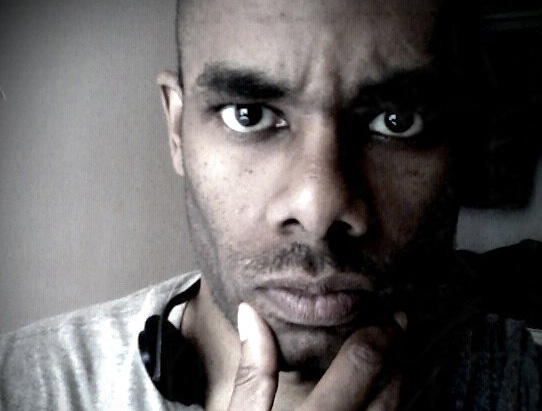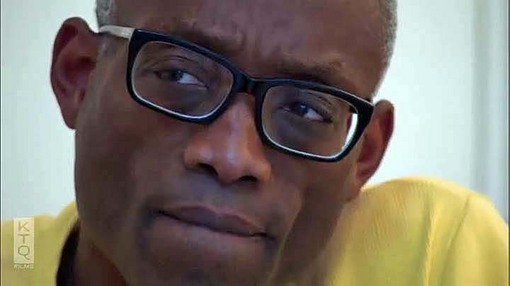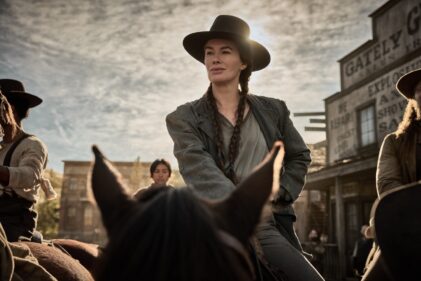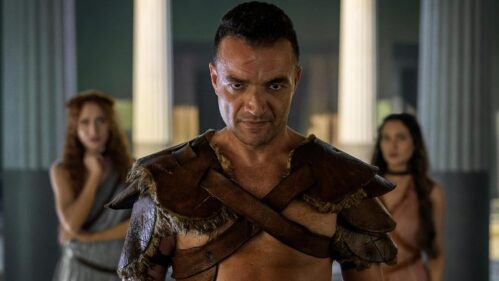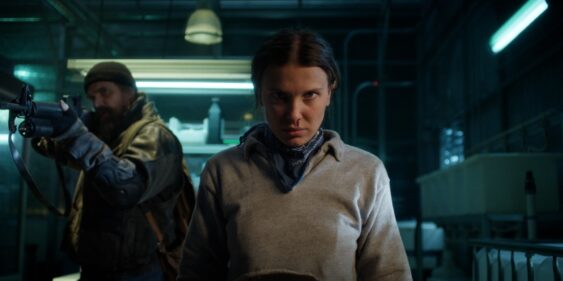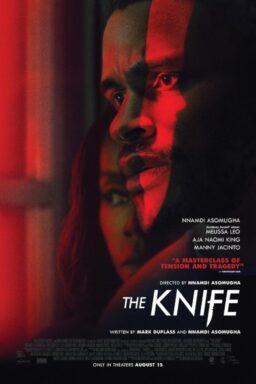“Bill T. Jones: A Good Man,” premieres nationally Friday, November 11 at 9 p.m. (ET/PT) on PBS. Check local listings.
Bill T. Jones looks like an epic hero of dance. His cheekbones are as intricately chiseled as his sable Jack Johnson physique. When working as a choreographer-director, he projects artistic heroism, naturally striking poses of sage leadership straight out of Classics Illustrated. Having created a show celebrating Africa’s great musical activist, Fela Kuti (“FELA!“), to worldwide acclaim and Tony awards, he wasn’t yet done with the subject of heroes when it struck him to complete a long-gestating piece about Abraham Lincoln titled “Fondly Do We Hope/Fervently Do We Pray.”

“Bill T. Jones: A Good Man” is a documentary about Jones’s attempt to understand his lifelong hero-worship of The Great Emancipator, using an entire dance company as his investigative tool. Many of the dancers grew up idolizing Jones the same way he has bowed to Lincoln since childhood — an ingenious meta-reverberation of theme that’s clearly intentional. Jones wants to know if Lincoln was, indeed, the “good man” official history portrays. Leadership in times of war and social upheaval entails traversing a minefield of cynical agendas. Jones wants to know if idealism can truly flower in such a toxic climate.

A day after bitching at many of his collaborators well into rehearsals, Jones gathers the company to apologize, but also to confess: He needs their help. Wearing dancer’s tights and no shirt rather than his usual sweats and t-shirt, he appears as vulnerable as his performers. He’s one of them for a moment, and he admits to having been puzzled about where he was steering this artistic ship. Now he realizes that the show isn’t about Lincoln but about Bill T. Jones and his unfashionable beliefs.

“Believing in great men now is not popular,” he begins. “You don’t do that, because we know everybody’s full of bullshit. All of my alienation and all–but at the bottom of it, I’m still a little boy who likes to read about [how] Abraham Lincoln freed the black people, was a good man, was honest… I think that’s what the piece wants to be about, that secret hope I have. Hope. Yeah, we’re in the shit. But the great man tells us, ‘You, too, can make it.'”
More than a pep talk and a creative re-up, Jones’ speech is a stirring demonstration of crafty leadership itself. He seems as aware of his iconic presence and how to use it as did Clint Eastwood directing himself in the movie “Unforgiven.” We watch his creation take shape as a kind of autobiography in motion.


We also get tantalizing glimpses of the finished work throughout. It is an exquisitely costumed, staged and lit parade of lingering antebellum ghosts. Some of the whimsical, terrifying shadow play resembles Kara Walker silhouettes. For a documentary in which the camera seems to be everywhere it needs to be at privileged moments, the performance scenes are especially keen. Cutaways to a uniformly distraught-looking audience are priceless. Interviewed after the show, these deer-in-headlights mention that they came to see a little dance; weren’t expecting a sensory and emotional assault. (The show opens with an aural bombardment that sounds like an air strike.)

All along the way, “A Good Man” recalls Jones’ life story, from being born in 1952 into a family of Florida potato pickers to forming a renowned dance company in New York with his late mentor and partner, Arnie Zane. Zane, a scrappy Bronx Bohemian who stood roughly a foot shorter than his protege, is the other “great man” haunting Jones. Photos and video clips chart their intense collaboration across the 1970’s and 80s, up until Zane’s death in 1988. Jones says early in the film that Lincoln was the first white man he was allowed to love unconditionally, but Zane is clearly the love of his life.

In that light, it’s interesting to hear Jones refer to his composer Christopher Antonio William Lancaster as “my love” and for his Artistic Director, Janet Wong, to describe her relationship with Jones as a marriage where she gives him, “My whole head, my body, everything.” Meanwhile, his current partner and set designer, the calm and wise Bjorn G. Amelan, keeps him grounded enough at home to return to work each morning in the spirit that he brought to his inspirational “great man” speech. Jones is tough on his “lovers,” offering a familiar rationale: “What is the antidote to intellectual sloth? Maybe it’s a bastard who asks you to do, do, do, do, do….” Jones is ever-ready to be that bastard for his team of artists. His frustrated tantrums, wall-punching and door slamming are classic auteur behavior. “I used to say that I want grace, that my reward in this life would be to find what grace is,” he says. “Now it’s all choppy seas. Grace is for the saints. I’m not a saint. I want to be a two-fisted maker.”






– – – – –

Steven Boone is a film film critic, filmmaker and video vandal based in New York City. He champions big ideas and small budgets at Big Media Vandalism, writes about essential films at Keyframe and Press Play, and about his experiences with homelessness at Capital.
